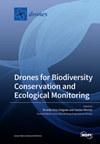Three-Dimensional Trajectory and Resource Allocation Optimization in Multi-Unmanned Aerial Vehicle Multicast System: A Multi-Agent Reinforcement Learning Method
IF 4.4
2区 地球科学
Q1 REMOTE SENSING
引用次数: 0
Abstract
Unmanned aerial vehicles (UAVs) are able to act as movable aerial base stations to enhance wireless coverage for edge users with poor ground communication quality. However, in urban environments, the link between UAVs and ground users can be blocked by obstacles, especially when complicated terrestrial infrastructures increase the probability of non-line-of-sight (NLoS) links. In this paper, in order to improve the average throughput, we propose a multi-UAV multicast system, where a multi-agent reinforcement learning method is utilized to help UAVs determine the optimal altitude and trajectory. Intelligent reflective surfaces (IRSs) are also employed to reflect signals to solve the blocking problem. Furthermore, since the UAV’s onboard power is limited, this paper aims to minimize the UAVs’ energy consumption and maximize the transmission rate for edge users by jointly optimizing the UAVs’ 3D trajectory and transmit power. Firstly, we deduce the channel capacity of ground users in different multicast groups. Subsequently, the K-medoids algorithm is utilized for the multicast grouping problem of edge users based on transmission rate requirements. Then, we employ the Multi-Agent Deep Deterministic Policy Gradient (MADDPG) algorithm to learn an optimal solution and eliminate the non-stationarity of multi-agent training. Finally, the simulation results show that the proposed system can increase the average throughput by 14% approximately compared to the non-grouping system, and the MADDPG algorithm can achieve a 20% improvement in reducing the energy consumption of UAVs compared to traditional deep reinforcement learning (DRL) methods.多无人机组播系统三维轨迹与资源分配优化:多智能体强化学习方法
无人机(uav)能够充当可移动的空中基站,以增强地面通信质量差的边缘用户的无线覆盖。然而,在城市环境中,无人机和地面用户之间的链接可能被障碍物阻挡,特别是当复杂的地面基础设施增加了非视距(NLoS)链接的可能性时。为了提高平均吞吐量,本文提出了一种多无人机组播系统,该系统利用多智能体强化学习方法帮助无人机确定最佳高度和轨迹。智能反射面(IRSs)也被用来反射信号,以解决阻塞问题。此外,由于无人机机载功率有限,本文旨在通过联合优化无人机的三维轨迹和发射功率,实现无人机能耗最小化和边缘用户传输速率最大化。首先推导了不同组播组中地面用户的信道容量。随后,基于传输速率要求,利用K-medoids算法解决边缘用户组播问题。然后,我们采用多智能体深度确定性策略梯度(madpg)算法来学习最优解,消除多智能体训练的非平稳性。最后,仿真结果表明,与非分组系统相比,该系统的平均吞吐量提高了约14%,与传统的深度强化学习(DRL)方法相比,MADDPG算法在降低无人机能耗方面提高了20%。
本文章由计算机程序翻译,如有差异,请以英文原文为准。
求助全文
约1分钟内获得全文
求助全文

 求助内容:
求助内容: 应助结果提醒方式:
应助结果提醒方式:


